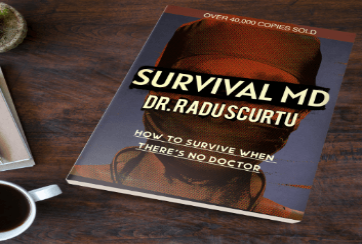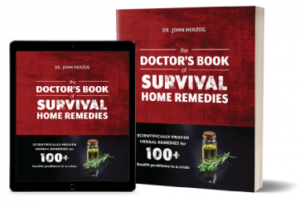Table of Contents
In times of crisis, whether natural disasters, pandemics, or other emergencies, having a reliable medical resource like SurvivalMD can be the difference between life and death. This is where SurvivalMD steps in as a comprehensive guide designed to equip individuals with the necessary knowledge and skills to handle medical emergencies efficiently. SurvivalMD is not just another manual; it is a meticulously crafted resource that emphasizes a holistic approach to medical preparedness, making it an excellent and worthwhile recommendation for anyone interested in safeguarding their health and well-being during unpredictable situations.
The strength of SurvivalMD lies in its ability to cover a wide array of medical scenarios, from minor injuries to life-threatening conditions. Its holistic approach ensures that users are well-prepared for various medical emergencies, offering detailed instructions and practical advice on how to manage each situation effectively. The guide encompasses not only immediate first-aid procedures but also long-term survival strategies, addressing both physical and psychological aspects of medical care in crises.
Accessibility is another key feature of SurvivalMD. The guide is designed to be user-friendly, with clear and concise language that makes it easy for individuals with no medical background to understand and implement the instructions. This accessibility ensures that even under the stress and pressure of an emergency, users can quickly find the information they need and take appropriate action.
Practical applications are at the heart of SurvivalMD’s content. The guide provides step-by-step instructions and visual aids to help users perform medical procedures correctly. From wound care and infection control to managing chronic illnesses without immediate access to professional medical help, SurvivalMD covers a broad spectrum of practical medical skills that are essential in crisis situations. This practical focus ensures that users are not just reading theoretical information but are also learning actionable steps that can be applied in real-world emergencies.
The importance of having a reliable medical resource like SurvivalMD in times of disaster or emergency cannot be overstated. It empowers individuals to take control of their health and provides the confidence needed to navigate through challenging medical situations. By focusing on a holistic approach, accessibility, and practical applications, SurvivalMD stands out as a critical tool for medical preparedness in any crisis.
During a crisis, managing chronic diseases such as diabetes, hypertension, and asthma becomes both crucial and challenging. Ensuring that you are prepared to handle these conditions requires a multifaceted strategy, encompassing medication management, health monitoring, and lifestyle adjustments.

SurvivalMD:Stockpiling Necessary Medications
One of the primary steps in managing chronic diseases during a crisis is to stockpile necessary medications. Ensure you have a sufficient supply of your prescribed medications to last at least a few months. This can be achieved by discussing with your healthcare provider about obtaining extended prescriptions. Additionally, consider organizing your medications in a way that makes them easily accessible and clearly labeled. Keep a list of all medications, including dosages and administration times, to maintain a structured regimen.
SurvivalMD:Monitoring Health Conditions
Without regular access to medical care, monitoring your health conditions becomes paramount. For diabetes, this means regularly checking blood glucose levels using a reliable glucometer. For hypertension, it involves frequent blood pressure monitoring with a home blood pressure cuff. Asthma patients should keep a peak flow meter handy to track their lung function. Recording these readings consistently can help you detect any deviations from your usual patterns and act accordingly. Keep a health journal where you log these measurements along with any symptoms experienced, which can be invaluable if you need to consult a healthcare provider remotely.
SurvivalMD:Lifestyle Adjustments
Lifestyle adjustments play a significant role in managing chronic diseases when medical resources are limited. For diabetes, maintaining a balanced diet low in sugars and refined carbohydrates can help manage blood glucose levels. Incorporate regular physical activity, such as walking or home-based exercises, to keep hypertension in check. Asthma patients should avoid known triggers, such as smoke or allergens, as much as possible. Staying hydrated, getting adequate sleep, and practicing stress-reducing techniques like meditation or deep breathing exercises can also support overall well-being.
SurvivalMD:Planning for Chronic Disease Management
Having a comprehensive plan for managing chronic diseases during a crisis is essential. This plan should include a list of emergency contacts, including healthcare providers familiar with your medical history. Equip yourself with knowledge about your condition and potential emergency interventions. Educate family members or those you are with about the signs of complications and the necessary steps to take. Being proactive and prepared can significantly reduce the risks associated with managing chronic diseases in a crisis situation.
First Aid: Treating Wounds, Breaks, Burns, and Injuries
In times of crisis, the ability to administer first aid can be crucial. Knowing the proper steps to treat wounds, fractures, burns, and other injuries can significantly improve outcomes. Swift and appropriate action helps in stopping bleeding, preventing infection, and stabilizing the injured individual.
For treating wounds, the first priority is to stop the bleeding. Apply direct pressure using a clean cloth or bandage. Elevate the injured area above the heart level if possible. Once bleeding is controlled, clean the wound thoroughly with clean water to remove any debris. Avoid using hydrogen peroxide or iodine directly in the wound, as these can damage tissue. After cleaning, apply an antibiotic ointment and cover the wound with a sterile bandage or dressing to keep it clean and moist, which promotes healing.
In the case of fractures, immobilization is key. Create a splint using available materials such as sticks, rolled-up magazines, or cardboard. Ensure the splint extends beyond the joints above and below the fracture site. Secure the splint with strips of cloth, avoiding excessive tightness that could impede circulation. Refrain from attempting to realign the bone; focus on keeping the injured area as still as possible until professional medical help is available.
Burn injuries require immediate and careful attention. For minor burns, cool the burn under running water for at least 10 minutes to reduce pain and swelling. Do not apply ice, as it can cause further tissue damage. For more severe burns, after cooling the burn, cover it with a clean, non-stick dressing or cloth. It is crucial not to use butter, oils, or any home remedies on burns, as these can retain heat and increase the risk of infection.
In addition to burns and fractures, treating other injuries such as sprains and strains involves the R.I.C.E. method: Rest, Ice, Compression, and Elevation. Ensuring that these injuries are appropriately managed can prevent complications and aid in a quicker recovery.
Being prepared with the knowledge and supplies to handle these common injuries can make a significant difference in crisis situations. Always prioritize safety and seek professional medical assistance as soon as possible.
SurvivalMD:Emergency Bleeding Control: Stop Bleeding in Seconds
In crisis situations, controlling severe bleeding is paramount to saving lives. Immediate and effective action can prevent shock and other life-threatening complications. Understanding and applying the correct techniques for different types of bleeding is essential for medical preparedness.
When dealing with severe bleeding, the use of tourniquets, pressure bandages, and hemostatic agents are crucial tools. Tourniquets are especially effective for controlling arterial bleeding in limbs. To apply a tourniquet, place it about 2-3 inches above the wound, tighten until the bleeding stops, and note the time of application. Tourniquets should only be used when direct pressure is insufficient, as prolonged use can cause tissue damage.
Pressure bandages are another effective method for managing severe bleeding. They combine the principles of direct pressure and gradual tightening to control blood flow. To apply a pressure bandage, first place a sterile dressing over the wound, then wrap the bandage around the limb, ensuring it is snug but not cutting off circulation. Continue wrapping until the bleeding subsides and secure the bandage in place.
Hemostatic agents, such as gauze impregnated with substances that promote clotting, can be lifesaving when traditional methods fail. These agents are particularly useful for wounds in areas where a tourniquet cannot be applied. To use a hemostatic agent, pack the wound with the gauze and apply firm pressure for several minutes. This speeds up the body’s natural clotting process and helps to control bleeding effectively.
Recognizing different types of bleeding and responding appropriately is critical. Arterial bleeding, characterized by bright red, spurting blood, requires immediate tourniquet application. Venous bleeding, which involves a steady flow of dark red blood, often responds well to pressure bandages. Capillary bleeding, indicated by oozing blood, can typically be managed with direct pressure and a simple dressing.
Stopping bleeding quickly is vital to prevent shock, a condition that can occur when blood loss leads to insufficient oxygen delivery to tissues. Shock can cause organ failure and death if not promptly addressed. Therefore, mastering these techniques and recognizing the severity of different types of bleeding are essential components of medical preparedness in emergency situations.
SurvivalMD:Life-Saving Kitchen Ingredients
In times of crisis, the importance of medical preparedness cannot be overstated. Surprisingly, some of the most effective life-saving tools can be found right in our kitchens. Three common kitchen ingredients—honey, salt, and baking soda—possess remarkable properties that can be harnessed for emergency medical situations. Understanding their scientific basis and practical applications can significantly contribute to survival efforts.
Honey is renowned for its natural antibacterial and anti-inflammatory properties. Its high sugar content creates an osmotic effect that inhibits microbial growth, making it an excellent wound dressing. Research has demonstrated honey’s efficacy in promoting wound healing, reducing infection, and minimizing scarring. For instance, applying honey to a cut or burn can accelerate healing and provide relief from pain, making it an invaluable first-aid resource in emergencies.
Salt, another ubiquitous kitchen staple, is vital for its antiseptic qualities. Saline solutions made from salt and water are widely used to clean wounds, irrigate eyes, and even treat dehydration through oral rehydration solutions (ORS). The scientific principle behind this is osmosis, where a saline solution helps to draw out contaminants and promote tissue healing. In the absence of commercial antiseptics, a homemade saline solution can be a life-saving alternative, effectively reducing the risk of infection.
Baking soda, or sodium bicarbonate, also offers versatile medical benefits. Its alkaline nature makes it an effective antacid, providing relief from heartburn and indigestion. Additionally, baking soda can be used to neutralize acidic toxins from insect bites and stings, alleviating pain and inflammation. Mixing baking soda with water to create a paste can be applied to the affected area, offering immediate relief and preventing further complications.
These three ingredients—honey, salt, and baking soda—demonstrate the profound impact that common kitchen items can have in emergency medical care. Their accessibility and scientifically-backed effectiveness underscore their role in saving millions of lives each year. By integrating these natural remedies into medical preparedness plans, individuals can enhance their capacity to respond to crises with readily available resources.
SurvivalMD:Building a Legal Stockpile of Essential Medications
In times of crisis, having a well-prepared stockpile of essential medications can be crucial for survival. Ensuring that this stockpile is built legally is equally important. This involves understanding the regulations surrounding the acquisition of antibiotics, painkillers, and other critical medications.
First and foremost, it is essential to consult with a healthcare professional. This step is vital not only to ensure that you are acquiring the correct medications for your needs but also to obtain the necessary prescriptions legally. Many medications, particularly antibiotics and strong painkillers, require a prescription to be obtained and stored legally.
Once you have the prescriptions, consider purchasing from reputable pharmacies. Pharmacies ensure the authenticity and quality of the medications, which is paramount for their effectiveness during a crisis. Additionally, some pharmacies offer bulk purchase options, which can be beneficial for building a comprehensive stockpile.
Proper storage of medications is another critical aspect. Medications should be stored in a cool, dry place, away from direct sunlight. This helps in maintaining their efficacy over time. It is also advisable to use airtight containers to protect the medications from moisture and contaminants. Labeling the containers with the medication name, dosage, and expiration date can aid in easy identification and ensure proper usage during emergencies.
Understanding the shelf life of medications is crucial. Most medications come with an expiration date, beyond which their effectiveness can diminish. Regularly rotating the stockpile ensures that you always have fresh and effective medications at hand. This can be managed by using a first-in, first-out (FIFO) system, where the oldest stock is used first.
In conclusion, building a legal stockpile of essential medications requires careful planning and adherence to regulations. By consulting healthcare professionals, purchasing from reputable sources, and ensuring proper storage and rotation, you can create a reliable medical preparedness plan that will be indispensable during crisis situations.
SurvivalMD:Avoiding Common Mistakes When SHTF
In crisis situations, the potential for making errors increases significantly due to heightened stress and urgency. One of the worst mistakes to avoid is panic buying. This often leads to acquiring unnecessary items while overlooking essential supplies. To mitigate this, it is crucial to have a pre-established list of necessities and stick to it, ensuring a balanced stockpile that includes food, water, medical supplies, and other critical resources.
Inadequate preparation is another common pitfall. Many individuals wait until a crisis is imminent before attempting to prepare, which can result in insufficient supplies and poorly thought-out plans. Consistent, proactive preparation is key. Regularly updating emergency kits, practicing evacuation drills, and staying informed about potential threats can greatly enhance readiness and reduce the likelihood of being caught off guard.
Improper medical care during emergencies can have severe repercussions. Without proper training or knowledge, individuals may administer incorrect treatments or fail to recognize critical symptoms. It is essential to gain basic medical knowledge and keep a well-stocked first aid kit. SurvivalMD emphasizes the importance of understanding first aid procedures, recognizing common medical issues, and knowing when to seek professional help if available.
Another critical aspect is maintaining composure. Panic can cloud judgment and lead to hasty, ill-advised decisions. Staying calm allows for clear thinking and informed decision-making. Developing a well-thought-out plan ahead of time and practicing it can help ensure that actions taken during a crisis are deliberate and effective.
Lastly, always communicate and collaborate with others in your vicinity. Isolation can exacerbate the difficulties faced during a crisis. Sharing resources, knowledge, and responsibilities within a community can significantly improve the chances of effective crisis management and survival.
By avoiding these common mistakes and adhering to a structured, informed approach, individuals can greatly enhance their resilience and preparedness in crisis situations.
SurvivalMD:Simple Techniques for Stitching Cuts
Stitching a cut is a critical skill in medical preparedness, especially during crisis situations where professional medical help may not be readily available. Proper stitching can significantly aid in wound healing and prevent complications such as infections. Here, we outline the essential steps and techniques for stitching a cut, along with guidelines on when to seek professional assistance.
Before attempting to stitch a cut, ensure you have the necessary materials: sterile gloves, antiseptic solution, sterile sutures or a needle and thread, tweezers, scissors, and sterile gauze. It is also crucial to understand when a wound requires stitching. Cuts that are deep, longer than half an inch, or continue to bleed despite applying pressure for 15-20 minutes generally need stitches. However, if the wound is located on a joint, shows signs of infection, or if the person has underlying health conditions such as diabetes, seek professional medical help immediately.
Start by thoroughly cleaning the wound to prevent infection. Wash your hands and put on sterile gloves. Use an antiseptic solution to clean the area around the cut, ensuring all debris and dirt are removed. Pat the wound dry with sterile gauze.
Next, prepare your sterile sutures or needle and thread. If using a needle and thread, ensure they are sterilized by boiling them for at least 20 minutes. Use tweezers to gently align the edges of the cut, and begin stitching from one end of the wound. Insert the needle about a quarter of an inch from the wound edge, pulling it through to the opposite side and tying a knot to secure the stitch. Continue this process, spacing the stitches evenly, until the wound is completely closed.
After stitching, apply an antiseptic ointment and cover the wound with a sterile bandage. It is crucial to monitor the wound for signs of infection, such as redness, swelling, warmth, or discharge. Change the bandage daily and keep the wound clean and dry. If any signs of complications arise, seek professional medical assistance immediately.
Properly stitching a cut can be life-saving in crisis situations, but always prioritize cleanliness and monitor the wound carefully to ensure optimal healing and prevent further complications.





